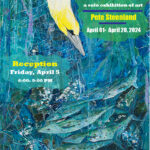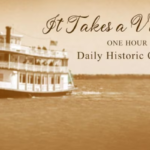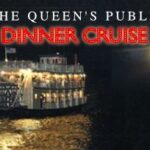By Kathryn Varnes
 We took our most recent trip late last spring, which is a wonderful time to go, as summers are very hot and there are lots of tourists. We began our trip in Madrid, one of our very favorite cities, and stayed at an historic hotel in the city center.
We took our most recent trip late last spring, which is a wonderful time to go, as summers are very hot and there are lots of tourists. We began our trip in Madrid, one of our very favorite cities, and stayed at an historic hotel in the city center.
The heartbeat of Madrid is the Plaza Mayor and our go-to place for tapas and Spanish wine. The Bull Bar there is a must stop for a cerveza or glass of wine. It is in the middle of a tourist zone, but still has a very local feel to it, with bullfighting memorabilia and walls lined with photos of famous bullfighters and pictures, including many photos of them being bored – not for the queasy!
The Mercado de San Miguel is just behind the Plaza Mayor and another must stop for foodies. With dozens of food and beverage stalls selling tapas, olives, cheeses, breads and seafood, plus wines and champagne, it is a lively and festive mix of locals and travelers from all over Europe and the world.
The History and Culture
The historic buildings are countless and there are many awesome museums, but none on the scale of the world famous Prado, where you could spend days walking corridors and eyeing the art of many of the greatest, including Diego Velazquez, Goya and Ribera.
On this trip, we stumbled upon the Spanish Naval Museum. A smaller and less pretentious museum, it showcases the history of Spain’s navy from almost 700 years ago when the Spanish (along with the Dutch, French and British) colonized the world and, ultimately, discovered our part of the planet.
We rented a car and drove through hundreds of miles of olive groves to reach Granada, best known for the amazing Alhambra Palace. Built by the Moors in 1238 and unbelievably majestic, Alhambra represents the richness of the times and is filled with mosaic tiles and beautiful patterns similar to those still popular today. Largely well-preserved, the detail of the architecture and art are intact, as are the gardens, which still use a form of irrigation developed during the time of its construction.
From Grenada, we drove south to the town of Ronda in the Malaga Province. A historic city broken in two by a very deep gorge, one side of Ronda is from the days of the Moors, while the other dates to the 15th century. Ronda is famous for being the home of Spanish bullfighting and where Ernest Hemingway spent years enjoying the sport, ultimately using it as the subject of two books; “Death in the Afternoon” and “The Dangerous Summer.”
And the Food…
After a visit to the ring and to the Bullfighting Museum, we found a centuries old home/restaurant that overlooks a gorge before actually hiking down into and around it – just an awesome experience! Ronda is a bit out of the way, but just amazing and so easy to understand why personalities like Hemingway, Ava Gardner and Orson Welles (he is buried there) chose it as a European retreat.
One important thing to remember while in Spain is that Spaniards still embrace the afternoon siesta. So don’t go much of anywhere in the country looking for shopping between about 2 to 5 p.m. any day of the week. Dinner, as in much of Europe, is an evening event with most restaurants not opening before 8 o’clock at night.
From the Basque country in the north to Barcelona, Madrid, Seville and all the towns in between, Spain has the culture and history of few other places in the world. I can’t wait to go back!











